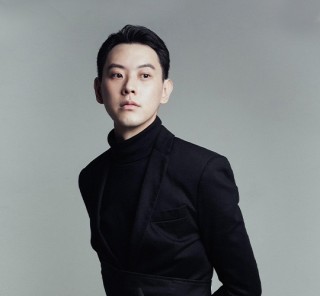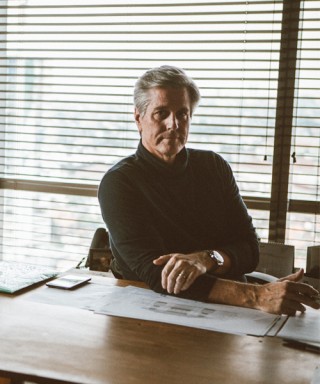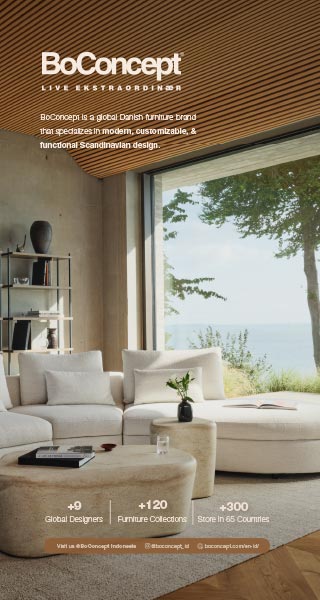
Lorenzo Rudolf In Conversation With Susan Santoso
Published by Sugar & Cream, Thursday 05 January 2017
Text and Images courtesy of Art Stage Singapore
Lorenzo Rudolf In Conversation With Susan Santoso
Susan Santoso, 41, is one of Indonesia’s more prominent young collectors. The single mother of three and successful entrepreneur describes her main passion as collecting art – a practice she has closely integrated into her life for the last 10 years.

Christine Ay Tjoe, Untitled (Gift from the artist).
LR: Susan, you are one of the so-called famous young collectors in Indonesia, and you grew up in a collector’s family. The interest in art, the practice of collecting – can you tell us how it all began?
SS: My dad is a very good painter, actually. My family has loved paintings ever since we were young, so we used to go to Bali and visit artist studios. My family’s favourite destination is Europe, so every time we travelled there they would take me to museums. That’s how I developed my interest in art. My parents have also dabbled in bits of collecting. However, I can honestly say that I only seriously got into the art world after buying my first Christine Ay Tjoe painting 10 years ago.
LR: What was it about this first painting that struck you?
SS: It’s funny because that period was right after the financial crisis hit – I just had my kid, and we just moved back to Indonesia. Sotheby’s was having an auction, and I had my heart set on buying a Nona Garcia, but then my son, who was two years old at the time, insisted I get the Christine Ay Tjoe. What’s interesting is that the Christine Ay Tjoe lot actually went on the block before the Nona Garcia, and I purchased it then and there. But I never really understood the meaning of the painting, until I met and got to know the artist personally a few years later. That was the turning point, and marked the beginning of my serious pursuit of art.
LR: I think we all saw, when you opened your home for the special private collection visits as part of the Art Stage Jakarta VIP Programme, that beyond your art collection, Christine Ay Tjoe also plays an incredibly crucial role in your life. What is your relationship with the artist and her work?
SS: I feel that we share many similarities, being women in Indonesian culture whereby we are restricted by many social boundaries and norms. Our lives are pretty unconventional, compared to most women. It’s often difficult to express our life journey and emotions, so to me, the best and most courageous way is through art. I found a great deal of the struggles and triumphs of my own life journey reflected in her paintings. That’s how I developed a close connection with Christine Ay Tjoe and her work.
LR: So this is not just the story of a collector who finds her life reflected in the paintings of an artist, but the story of a close connection between collector and artist too.
SS: Yeah, it’s a close relationship. Sometimes Christine will share her intentions behind the paintings, but there were also many personal interpretations I gathered that enabled me to relate on a more emotional level, which makes it very precious to me. Along with getting to know her better, I also feel like I’ve grown together with her works over the years, and I’m now better able to discern which paintings depict the deepest part of her emotions, and how they similarly echo my own life experiences.
LR: Do you both also exchange life philosophies and stories with each other? Or does the discussion always revolve around art?
SS: Oh no, I think we’ve been through quite a bit, and getting to know Christine Ay Tjoe has been a truly life-changing experience because I learned so much from her. I learned a lot about courage and religion, that you can turn adversity into triumph. Collecting her work has an essence of perseverance and resilience that I strongly identify with.
LR: Lots of collectors who visited your home during Art Stage Jakarta were really touched by the honesty of the works because your collection felt like a true mirror of the collector herself. You are not afraid to open yourself.
SS: Oh it was very scary. I remember having some wine to calm my nerves before I started talking because it was just such a raw experience. I actually asked the visitors to refrain from taking photos because these paintings are the windows to my soul. I felt really naked – baring your soul is a scary feeling.
LR: Are you aware that many people were very moved by the way you shared about your collection?
SS: I don’t know how deep of an impact it made, I only know that I was just trying to be myself – to be truthful and honest. I wanted to share my life experience, whether good or bad. It was an empowering moment – I wasn’t afraid of being judged for who I am as a person, because the paintings themselves already revealed so much about me. It felt liberating to be able to be honest with myself, and not hide behind a certain perception that people have always had about me. To have people see into you through the art you collect is extremely personal.
LR: Absolutely. Do you only collect Christine Ay Tjoe’s paintings, or installations and other three-dimensional works as well?
SS: I’m slowly trying to get into installation but I’m not quite there yet, because I need to be able to understand the story behind the work, how it relates to my life, and what it means to me. I’m not going to pretend like, “Oh I am already advancing, I am now collecting this type of work or that piece of art.” Although, I have recently started to appreciate performance art, like Marina Abramovic’s ‘The Artist is Present’ at the New York MOMA in 2010. I could watch that video a hundred times and it still puts me to tears; that’s probably the next type of art form I’m learning to experience and appreciate.
LR: Apart from being an artist whose life and work you closely identify with, Christine Ay Tjoe also has an incredible career and market-wise, is one of the most reputable Indonesian artists in the world. Apart from her, are there any other Indonesian artists you support and who have moved you?
SS: I think the next one would be Arin [Dwihartanto Sunaryo], because we have a similar struggle. My dad is a very famous and well-respected cardiologist in Asia, so there’s a certain level of pressure and expectation that comes with being his daughter. Arin’s father, Pak Sunaryo [Soetono] is one of the last remaining legendary Bandung painters, and I can see his son trying to break through that and establish his own identity. That’s why I find Arin’s work very relatable, because it’s what I’m trying to do too.
LR: Besides him, who would you recommend to someone interested in Indonesia’s bestselling young artists?
SS: Another artist worth paying attention to would be Cagi [Syagini Ratna Wulan] because she also represents a woman who is unconventional, who’s trying to move beyond public misconception. Despite what people might have thought about her in the past, she continues moving forward, and keeps striving to be better. And for women our society, it’s hard to do. So I appreciate that she pushes the boundaries, incorporating different dimensions on her canvases, putting a certain level of perfection into her colour concepts. She’s an artist that you should keep your eye on.
LR: Earlier you mentioned that your family travelled often and visited lots of museums together. Are you purely interested in Indonesian art or is your pursuit broader?
SS: It’s definitely broader. But then, It’s quite rare for something to touch my soul. I like Japanese artists a lot. There’s this particular Japanese artist called Tomoko Kashiki and I actually think her work is probably my most precious work right now because I put it in my bedroom. It’s actually wood-based, and what she does is that she destroys it by sanding it and literally working against the grain of the wood. It’s white on white with carving, and quite a difficult process but it also represents such purity; it reminds me that, at the end of the day, no matter what you see on the outside of people, there must be something very pure deep inside that person.
LR: To me, you’re a collector who is quite unique for our time, in the way that you put so much thought into realising yourself through the art you collect, and I think that’s what makes your collection special. On the other hand, Indonesia also has a really active community of young collectors, groups of friends who are constantly exchanging ideas and discussing art together. Despite all this connectedness, you’ve still found your own way. How did this happen?
SS: I have to say, I have great art mentors like Tom [Tandio] and Jasmine [Prasetio] who have taught me a lot, but to be honest, I don’t really hang out with the art people. So despite how closely associated I am with the art community here, I still try to maintain a certain distance because my collecting practice is a very personal journey to me. By detaching myself from an environment of comparison about who bought what and buzz about which artist is trendy right now, I can form my own opinions without being swayed by peer influence, and that’s how I learn to trust my own instincts when it comes to collecting art.
LR: Wonderful. You said in the beginning that your first acquisition was somewhat influenced by your son. How are your kids growing up with a mother who’s an art collector? Do you educate your kids and try to introduce them to the world of art?
SS: Well, I think it’s a very natural process. My eldest son really enjoys art. He helps me pick the next artwork to purchase, and I actually do value his opinion because I want to know what the innocence of a 10-year-old boy sees in a painting. Because his eyes are different from mine, and I think the innocence is very pure, very honest. And that’s how I teach my son to appreciate art, by encouraging them to form their own opinions about a certain work that I want to acquire.
LR: That would then be the third generation of people like you in your family!
SS: Hopefully. Also, I forgot to mention, there was another painting by Yuan Yuan that was hung here before I moved it. I thought it was an important painting because it looks like a crystal room with a gold chandelier – everything looks so beautiful. It looks like a mirrored ballroom, but when you look closer, the reflection in the mirrors are all decaying. And that pushes us to question, “What is the legacy as a collector, as a person, that you want to leave behind?” You might want to look rich, glamorous and powerful on the outside, but if you look inside the mirror and you’re decaying, it all means nothing. That particular painting really pushed me to contemplate my life – like what do I want to achieve, what do I want to leave behind for my children, what legacy do I want to be known for after I’m long gone? Will they think that I am an art collector who left something influential and valuable for the next generation that informs their collecting practice? I don’t know now, but I certainly don’t want to be that decaying reflection in the mirror with a façade of expensive crystals. I want to be more than that; so that is my goal.
LR: Susan, in an increasingly superficial art world, I would love to meet more collectors like you. It has been an absolute pleasure. Thank you.
SS: Thank you so much for the opportunity. I am very glad that I could share this experience – even though this sharing hasn’t been easy for me, it’s kind of emotionally cathartic in a way, so I would be glad if anyone at all finds this useful.
 4.19K
26/12/2025
4.19K
26/12/2025
WHEN LEGO BECOMES A HOLIDAY LIFESTYLE GIFT
From F1-inspired builds to artful designs, LEGO invites adults to slow down, create, and reconnect this holiday season.
read more 1.69K
26/12/2025
1.69K
26/12/2025
BACHA COFFEE’S HOLIDAY MENU - A SYMPHONY OF FLAVOUR AND FINESSE
Savour the Season: Bacha Coffee unveils its Holiday Menu - a symphony of flavour and finesse
read more 11.01K
03/12/2025
11.01K
03/12/2025
LIVING DIVANI ILLUMINATES THE FESTIVE SEASON IN SHADES OF DEEP RED AND LUMINOUS SILVER
Living Divani illuminates the festive season in shades of deep red and luminous silver, reimagining its iconic designs with festive radiance.”
read more 10.30K
15/12/2025
10.30K
15/12/2025
CIERRE1972 PRESENTS BELT AND MAC: TWO ARMCHAIRS DEFINED BY CONTEMPORARY ELEGANCE
Cierre1972’s Dynamic Duo, Defined by Contemporary Elegance
read more 81.67K
10/01/2025
81.67K
10/01/2025
W RESIDENCE IN SOUTH JAKARTA BY MICHAEL CHANDRA
Michael Chandra, founder of MNCO Studio Design has created the W Residence with an aesthetically pleasing, practical, and pleasant home from all...
read more 44.46K
11/07/2025
44.46K
11/07/2025
PELUNCURAN PERDANA LEGANO HOME MENGGANDENG AGAM RIADI DI ST REGIS RESIDENCE JAKARTA
Peluncuran perdana LEGANO HOME menggandeng Agam Riadi di St. Regis Residence Jakarta: menyatukan kemewahan dan jiwa dalam sebuah ruang.
read more















